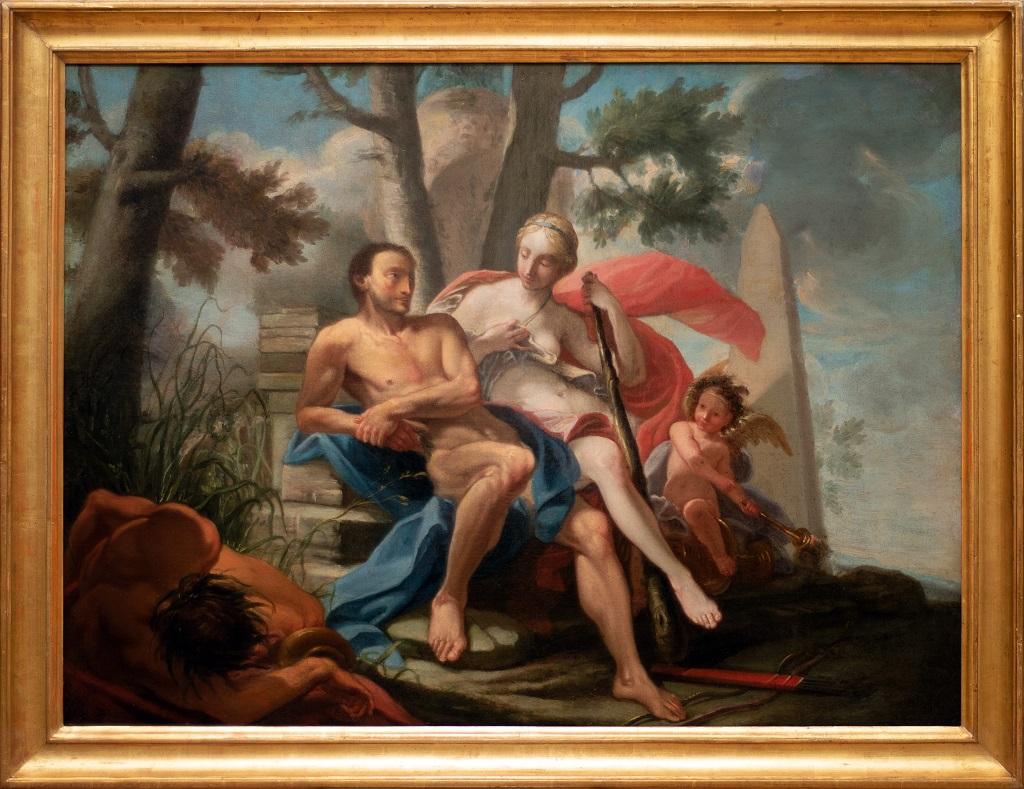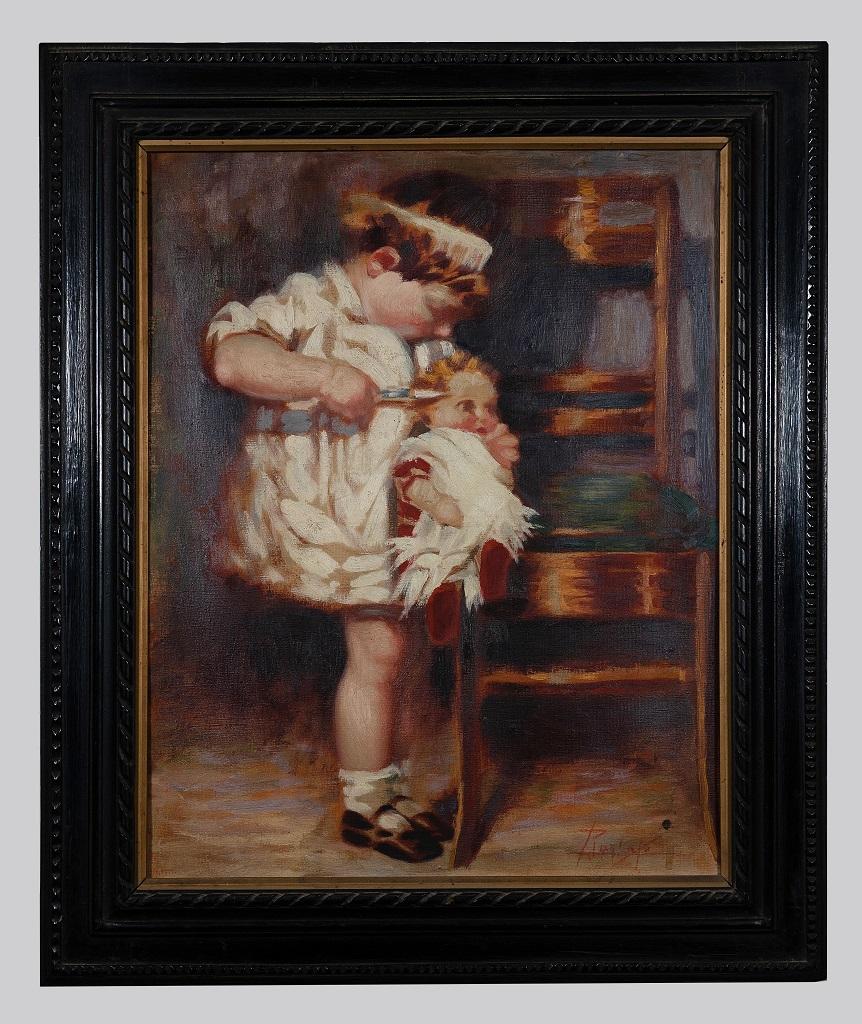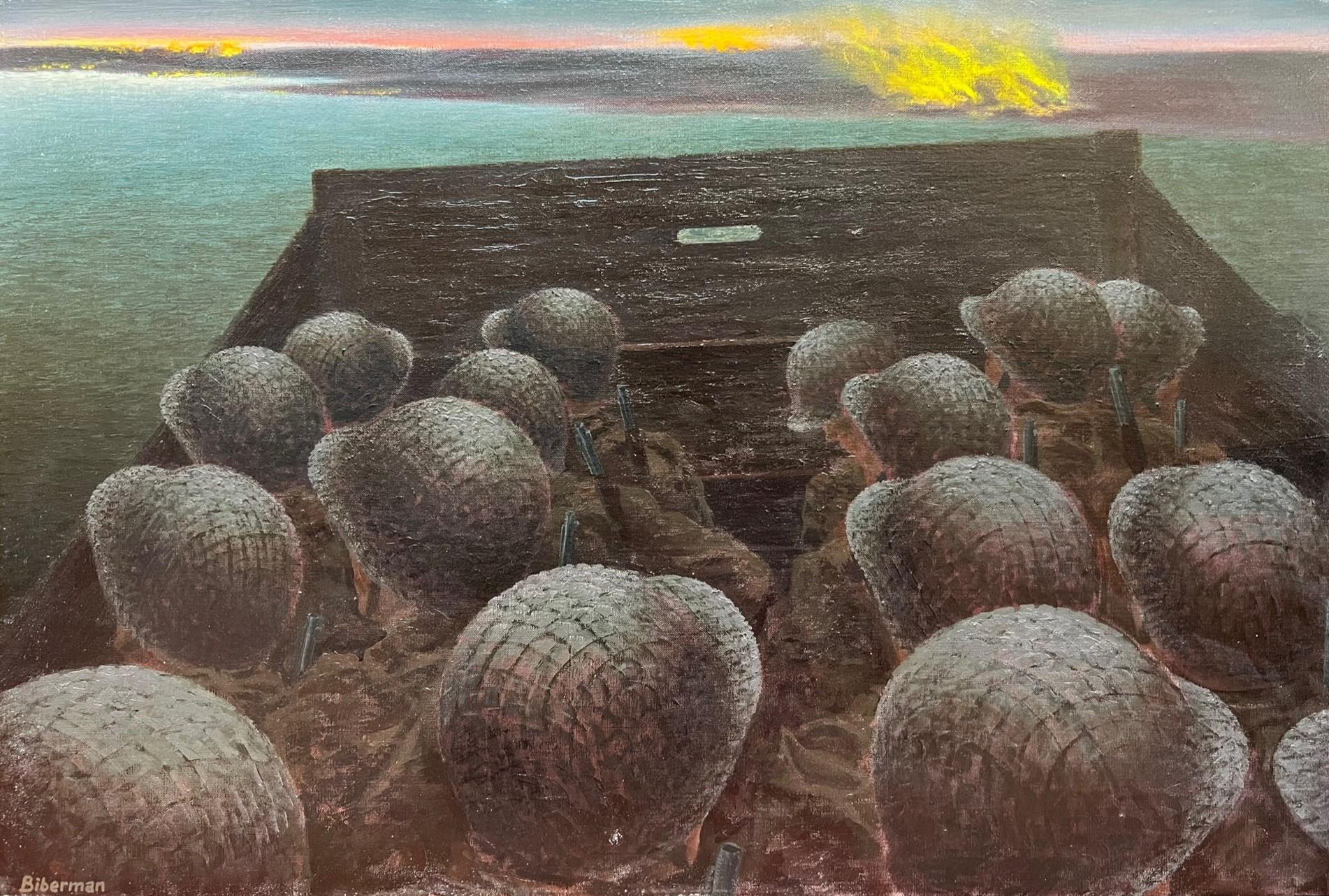Items Similar to Farmer busy eating his lunch, (I think he's just boozing) by Axel Soeborg
Want more images or videos?
Request additional images or videos from the seller
1 of 14
Axel SoeborgFarmer busy eating his lunch, (I think he's just boozing) by Axel Soeborg
About the Item
Søeborg, Axel (1872-1939)
The ochre yawn of autumn and the bitter sleep of winter are the preoccupations of Danish artist Axel Søeborg's landscapes. With his singular hand, Søeborg spent twenty years capturing the rich palette of the Nordic countryside. He also had a penchant for dark interiors and contemplative, psychological self-portraits.
Søeborg's artistic career began as a house painter, but he soon changed his mind and turned to a more refined style of art. He began his studies at the drawing school of the Vermehren brothers, Gustav and Sophus, sons of the eminent Frederik Vermehren (1823-1910). His training continued at the Royal Danish Academy of Fine Arts, and with the figure painters Laurits Tuxen (1853-1927) and Peter Alfred Schou (1844-1914). Schou's dark interiors and moody scenes were Søeborg's greatest source of inspiration.
Søeborg lends a contemplative, insightful atmosphere to close-up, curious depictions of simply furnished interiors. The gaze of his subjects, usually himself and an unknown woman, is imbued with psychological intensity. They fix the viewer with a piercing gaze. Combined with a strong use of shadow to envelop the rooms in intimacy, and a radiant use of light to make his subjects the focus of the scenes, the viewer is drawn into a scene filled with emotion.
Indeed, his self-portraits in particular have this intense quality. A striking Søeborg is depicted in strong, almost cubist lines, in profile but with his eyes fixed on the viewer. His gaze is heavy, his eyebrows very pronounced. Søeborg's strong use of light and shadow adds to the gravity, giving the scene a curious, otherworldly effect. One gets the impression that melancholy thoughts lurk behind those eyes. Combined with the darkness of the room, the tone is pensive and somber.
It's interesting to wonder what the painting offered Søeborg. Perhaps it was a mirror in which he could reflect the way he saw himself and the world around him. The psychological aspect that seems to underlie these works could be the cause. Whatever the case, it seems clear that he felt the emotional intensity of painting and used it to experiment with the medium as well as to explore his own perception of himself.
Beyond the interior, Søeborg also found much inspiration in the natural world. During the twenty years he spent living and traveling in Sweden, he captured the changes and transformation of nature as the seasons passed.
From Jamtland to Dalarna, across Småland, Søeborg's psychological brush seems to capture the emotion as well as the physical changes of nature.
Through his judicious use of lighting, Søeborg seems to imbue his canvases with the mood of nature. An autumn fire sets her canvas ablaze with ochre and earthy umber, obscuring the sky. A silvery sheet of suffocating winter descends on a village, smothering it in snow and adding an oppressive coldness. Then spring arrives, piercing the veil of immobility. Water flows freely, reflecting the bare arc of a stretched branch. The sumptuous grass and brightening sky in the background promise new life.
These fascinating representations of nature and the self did not enjoy immediate success in the art world. However, thanks to numerous exhibitions throughout Europe, Søeborg eventually gained recognition. A solo exhibition in 1937, one of many, sealed the deal. Søeborg died unexpectedly two years later.
Today, many of his works are preserved in museums in Aalborg and Sønderborg, Denmark.
- Creator:Axel Soeborg
- Dimensions:Height: 26.38 in (67 cm)Width: 26.38 in (67 cm)Depth: 1.58 in (4 cm)
- Medium:
- Movement & Style:
- Period:
- Condition:
- Gallery Location:Gent, BE
- Reference Number:1stDibs: LU2140213775342
About the Seller
5.0
Vetted Seller
These experienced sellers undergo a comprehensive evaluation by our team of in-house experts.
Established in 2018
1stDibs seller since 2022
Typical response time: 1 hour
- ShippingRetrieving quote...Ships From: Gent, Belgium
- Return PolicyA return for this item may be initiated within 10 days of delivery.
More From This SellerView All
- Washerwomen by the river, oil on canvas by Karl GirardetLocated in Gent, VOVThis painting is part of a series of paintings Girardet made of washerwomen by the river. Upon their presentation they had a considerable success, which endures till now. In 2008 another painting of this series was sold at Christie's . Karl Girardet was born in 1813 in Le Locle, which at the time was part of France but is now part of Switzerland. Girardet lived and worked most of his life in Paris. After beginning his career as a painter of landscapes, he became a well-known history painter. As a confidant of the French king Louis Philippe I...Category
Late 19th Century Realist Figurative Paintings
MaterialsCanvas, Oil, ABS
- Boy with a fluteBy Leon HerboLocated in Gent, VOVLéon HERBO (1850-1907), Young boy with a flute, oil on canvas, signed upper left and dated 1879. This painting seems inspired by the painting "Singing Boy with a Flute" by the Dutch ...Category
Late 19th Century Dutch School Figurative Paintings
MaterialsCanvas, Oil
- Children playing in a forestLocated in Gent, VOVAmédée Elié Servin — (1829-1884) : Children playing in a forest A nice and confidently painted scene of three children playing in the midst of a dark forest. Through clever use of colour and light and dark effects, Elié Servin creates a mysterious and fairytale-like scene in which all attention is drawn to the playing children. Amédée-Élie Servin (1829-1884) Servin Amédée-Élie was a French painter and engraver, founder of the artistic community of Villiers-sur-Morin. Servin was born to a tanner, who, disappointed by his son's failure in his studies, apprenticed him to an upholsterer where he learned to draw cartoons. He then entered the École des Beaux-Arts and studied under the painter Michel Martin Drolling. At this school, he befriended students of his generation, such as Jean-Jacques Henner, Benjamin Ulmann and Paul Baudry...Category
1880s French School Figurative Paintings
MaterialsOil, Canvas
- Riders and Bedouins walking on a path near a cliff, Oil on panel by Honoré BOZELocated in Gent, VOVCavaliers et bédouins marchants sur un chemin près d’une falaise. (panneau 32 *20 cm) Honoré Boze est un peintre orientaliste français, né à l'île Maurice...Category
19th Century Figurative Paintings
MaterialsCanvas, Oil
- Horses resting at the watering place Oil on canvas by Jules Pierre Van BiesbroecLocated in Gent, VOVHorses resting at the watering place Oil on canvas by Jules Pierre Van Biesbroeck Jules Van Biesbroeck was born in Italy in 1873 during h...Category
20th Century Figurative Prints
MaterialsCanvas, Oil
- The blind man, oil on canvas by Maurice LangaskensBy Maurice LangaskensLocated in Gent, VOVA masterfully painted scene originating from the artist's studio In this painting, Langaskens brings together several motifs that were also the subject of his graphic work: the blind man, the priest, the nun and the farm that also appears in the famous etching "les toits rouges" (the red roofs). These elements are brought together in a dynamic and colourful composition, where the similarities to that other Belgian painter, Anto Carte, are striking. Combining these elements in this way creates a certain tension. Is the work about mercy (helping a blind man), or are we spectators of a scene where a poor wretch's purse is stolen? Striking is the use of impasto, in which the painter emphasises the texture of fabrics and skin via flowing lines. Maurice Langaskens 1884 - 1946 Biography A Belgian painter and printmaker, Maurice (Maurits) Langaskens enrolled in the Académie Royale des Beaux-Arts in Brussels in 1901, and was trained as a decorative painter by the leading Belgian muralist and sculptor Constant Montald. From early on, Langaskens was recognized as a fine draughtsman, and won several prizes at the Académie. After living and studying for a few months in France in 1906, mainly in Dijon, the young Langaskens settled in Schaerbeek, outside Brussels. He began his independent career in 1907, when he exhibited three decorative paintings at the Salon in Brussels for the first time and also had an exhibition of his work shown at the Salle Boute in the city. The following year he contributed six paintings to the 16th annual exhibition of the Belgian artist’s association ‘Pour l’Art’ in Brussels, where he was to exhibit frequently over the course of his later career, until 1941. (Langaskens also designed the poster for the 17th ‘Pour l’Art’ exhibition in 1909.) Also in 1908, one of his paintings was selected for an exhibition of modern Belgian art in Berlin. Much of Langaskens’s early work was in a vibrant and visually arresting Art Nouveau or Symbolist style. This bold and colourful manner also translated well into large-scale mural commissions, and he soon became one of the leading painter-decorators of the early 20th century in Belgium. His decoration of the town hall of the city of Zoutleeuw in 1912 earned the artist considerable fame and the praise of his teacher and mentor Montald: ‘He was one of the best students in the class; today he is the most outstanding artist among the decorators of our time.’ The same year the first of several exhibitions of Langasken’s work was mounted at the Cercle Artistique et Littéraire in Brussels. The outbreak of the First World War, however, brutally interrupted the rise of the artist’s successful career. Drafted into the Belgian army at the beginning of August 1914, Langaskens was captured by the Germans after less than a fortnight. He spent the next three and half years as a prisoner of war, at internment camps at Sennelager, Münsterlager and Göttingen. He produced numerous, mostly small-scale paintings and watercolours of portraits and depictions of many of his fellow prisoners, as well as scenes of daily camp life, that are today regarded as among his finest and most personal works. It was also during this period that he painted two of his best-known pictures, the large canvas In Memoriam, painted in 1916 and depicting the burial of a Belgian soldier by his comrades, and the monumental triptych Repose en Paix, painted between 1915 and 1918. After his liberation and return to Belgium, Langaskens exhibited over eighty of the paintings and drawings that he had produced as a prisoner of war at the Galerie Sneyers in Brussels in 1918. After the Armistice, Langaskens - suffering from aphasia and nervous disorders brought about by his long confinement - painted mainly easel pictures of winter landscapes, rustic genre scenes and floral subjects, and also produced a number of designs for tapestries, book illustrations and stained-glass windows. Within a few years, however, his health had recovered and he returned to undertaking large-scale decorative mural commissions. In 1920 Langaskens was one of the founders, alongside Montald, Jean Delville, Emile Fabry...Category
20th Century Figurative Paintings
MaterialsCanvas, Oil
You May Also Like
- Hercules and Omphale - Oil Painting on Canvas - 18th CenturyLocated in Roma, ITHercules and Omphale is an original painting realized in France between the end of the 18th and the beginning of the 19th Century. Original oil painting on canvas. Dimensions: 73 x...Category
Late 18th Century Modern Figurative Paintings
MaterialsCanvas, Oil
- Child and Doll - Oil Painting on Canvas - Early 20th CenturyLocated in Roma, ITChild with Doll is original artwork realized in the early 20th century. Mixed colored oil painting on canvas. Hand-signed on the lower right. Unread...Category
Early 20th Century Modern Figurative Paintings
MaterialsCanvas, Oil
- Kuppenheimer StudyBy Joseph Christian LeyendeckerLocated in Fort Washington, PAA Kuppenheimer ad study and was published in Step By Step Graphics, January/February 1987 in the article “Learning From Masters of the Past” by Walt and Roger Reed Medium: Oil on Ca...Category
1980s American Modern Figurative Paintings
MaterialsOil, Canvas
- BarcheLocated in Firenze, FIEnrico Paulucci's artwork "Barche" is a stunning painting with vibrant blue colors in the background. This piece is deeply connected to Liguria, his region in Italy, as it captures ...Category
Late 20th Century Modern Figurative Paintings
MaterialsCanvas, Oil
- The Landing/Dawn LandingLocated in Los Angeles, CAThis painting is part of our exhibition America Coast to Coast: Artists of the 1940s. The Landing/Dawn Landing, 1944, oil on canvas, signed lower left, 20 x 30, titled verso; exhib...Category
1940s American Modern Paintings
MaterialsCanvas, Oil
- Mountain Landscape - Oil Painting by Antonio Feltrinelli - 1920sBy Antonio FeltrinelliLocated in Roma, ITMountain Landscape is an orignal modern artwork realized by Antonio Feltrinelli in 1920s. Mixed colored oil painting on canvas. Not signed. Antonio Feltrinelli (Milan, 1887 – Garg...Category
1920s Modern Figurative Paintings
MaterialsOil, Canvas





